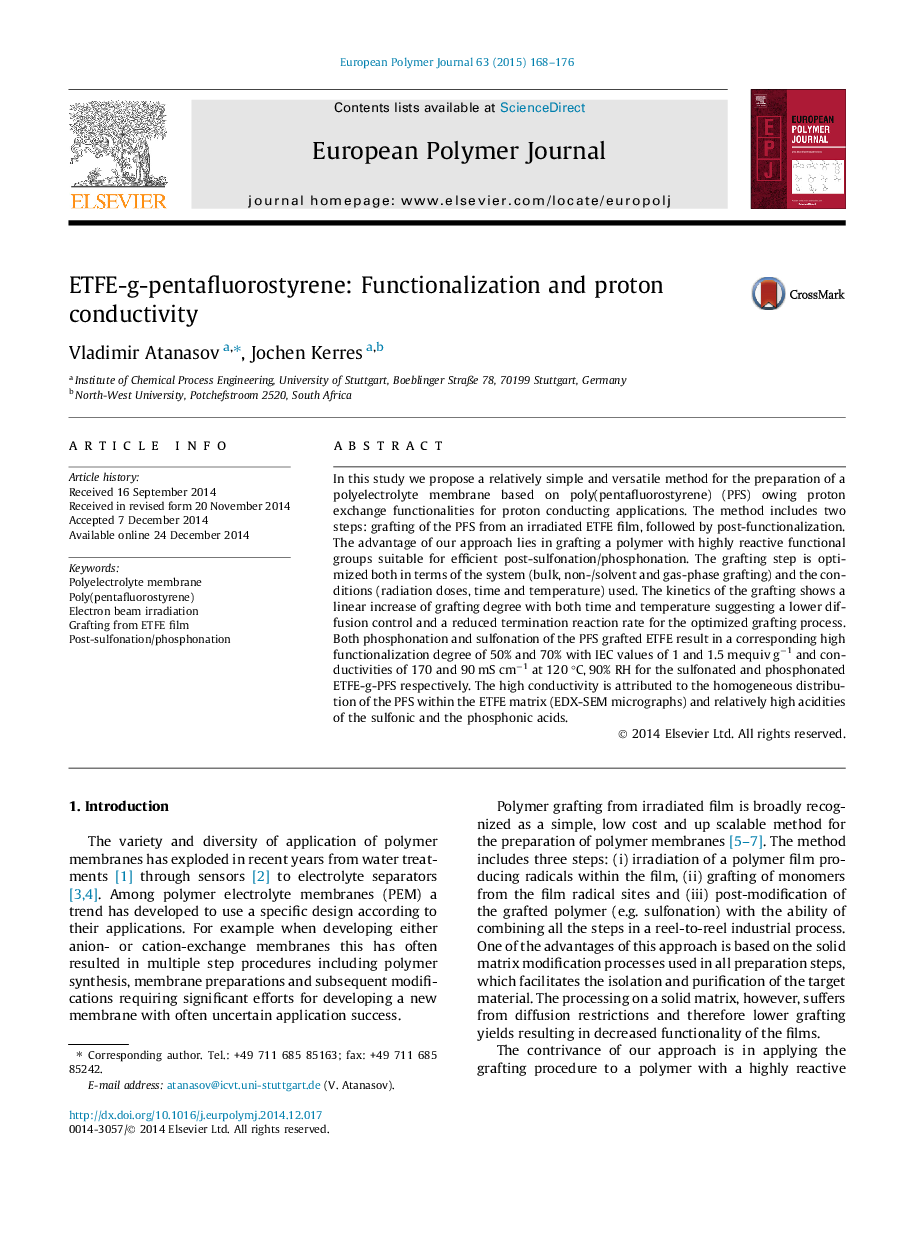| Article ID | Journal | Published Year | Pages | File Type |
|---|---|---|---|---|
| 1395434 | European Polymer Journal | 2015 | 9 Pages |
•New PEM based on pentafluorostyrene grafting from ETFE is developed.•Grafting is optimized to achieve control on degree of grafting.•Grafting is optimized to decrease the activation energy and termination reactions.•Efficient post-functionalization results in PEMs with IEC = 1–1.5 mmol g−1.•The conductivity (170 mS cm−1 at 120 °C, 90% RH) exceeds this of Nafion 117.
In this study we propose a relatively simple and versatile method for the preparation of a polyelectrolyte membrane based on poly(pentafluorostyrene) (PFS) owing proton exchange functionalities for proton conducting applications. The method includes two steps: grafting of the PFS from an irradiated ETFE film, followed by post-functionalization. The advantage of our approach lies in grafting a polymer with highly reactive functional groups suitable for efficient post-sulfonation/phosphonation. The grafting step is optimized both in terms of the system (bulk, non-/solvent and gas-phase grafting) and the conditions (radiation doses, time and temperature) used. The kinetics of the grafting shows a linear increase of grafting degree with both time and temperature suggesting a lower diffusion control and a reduced termination reaction rate for the optimized grafting process. Both phosphonation and sulfonation of the PFS grafted ETFE result in a corresponding high functionalization degree of 50% and 70% with IEC values of 1 and 1.5 mequiv g−1 and conductivities of 170 and 90 mS cm−1 at 120 °C, 90% RH for the sulfonated and phosphonated ETFE-g-PFS respectively. The high conductivity is attributed to the homogeneous distribution of the PFS within the ETFE matrix (EDX-SEM micrographs) and relatively high acidities of the sulfonic and the phosphonic acids.
Graphical abstractFigure optionsDownload full-size imageDownload as PowerPoint slide
